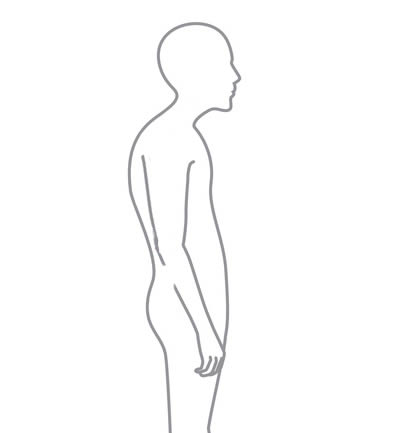Do you or someone you know have an upper back that looks rounded, with almost an appearance of a humped back? This condition is called kyphosis and indicates that there is an excessive spinal curvature in the upper back. It is especially common in senior adults, with about 20 to 40 percent experiencing kyphosis symptoms. It is seen more often in women than men aged 50 to 70.
What causes kyphosis?
The primary causes of kyphosis are poor posture and moving your body inefficiently, which can lead to imbalanced muscles which may hasten the onset of kyphosis or worsen the condition. Even practicing poor posture and good body alignment for short periods of time can negatively affect your spine. The lengths of your muscles may shorten from being in a contracted state for too long or might overly stretch and weaken from being extended too long. A muscle’s connective tissue can harden into an unnatural position, leading to a bulging appearance. Your head should sit directly over your body, forming a straight line from your shoulders to your ears. If you have a habit of bending your head into a flexed position, it can start to maintain that forward position and place stress on your spine. Additional known causes of kyphosis include degenerative changes in your body, compression fractures, or muscle weakness. Spine Surgeon Dr. Fischer at NYU Langone Medical Center in Midtown Manhattan is experienced in diagnosing kyphosis and developing a treatment plan.
What is the treatment?
The first step in treating kyphosis is practicing good posture. Improving the way you sit, stand and lay can impact your muscles and spine. Another key element in treating kyphosis is strengthening your neck and back, which will reduce the pressure on your spine. Performing exercises that extend your spine and strengthen the extensor muscles may reduce the angle of the curve in your back. Strong back muscles help to counteract the forward movement of your spine that is linked to kyphosis.
What are some effective exercises for kyphosis?
Consistently performing exercises focused on strengthening your back several times a week can be effective in treating kyphosis. Spine Surgeon Dr. Fischer at NYU Langone Medical Center can help you develop an exercise program ideal for your condition. Some of the most common exercises for improving a rounded upper back are movements like tucking your chin to stretch your neck, laying on your stomach and lifting your head and feet in a way that strengthens your back muscles, stretching your chest muscles, and using a foam roller across your back. Spine Surgeon Dr. Fischer can provide detailed information about exercises and even recommend a qualified physical therapist if that is advisable. The goal is to improve the curve in your back and keep it from getting worse. Contact our office today to schedule a consultation.

